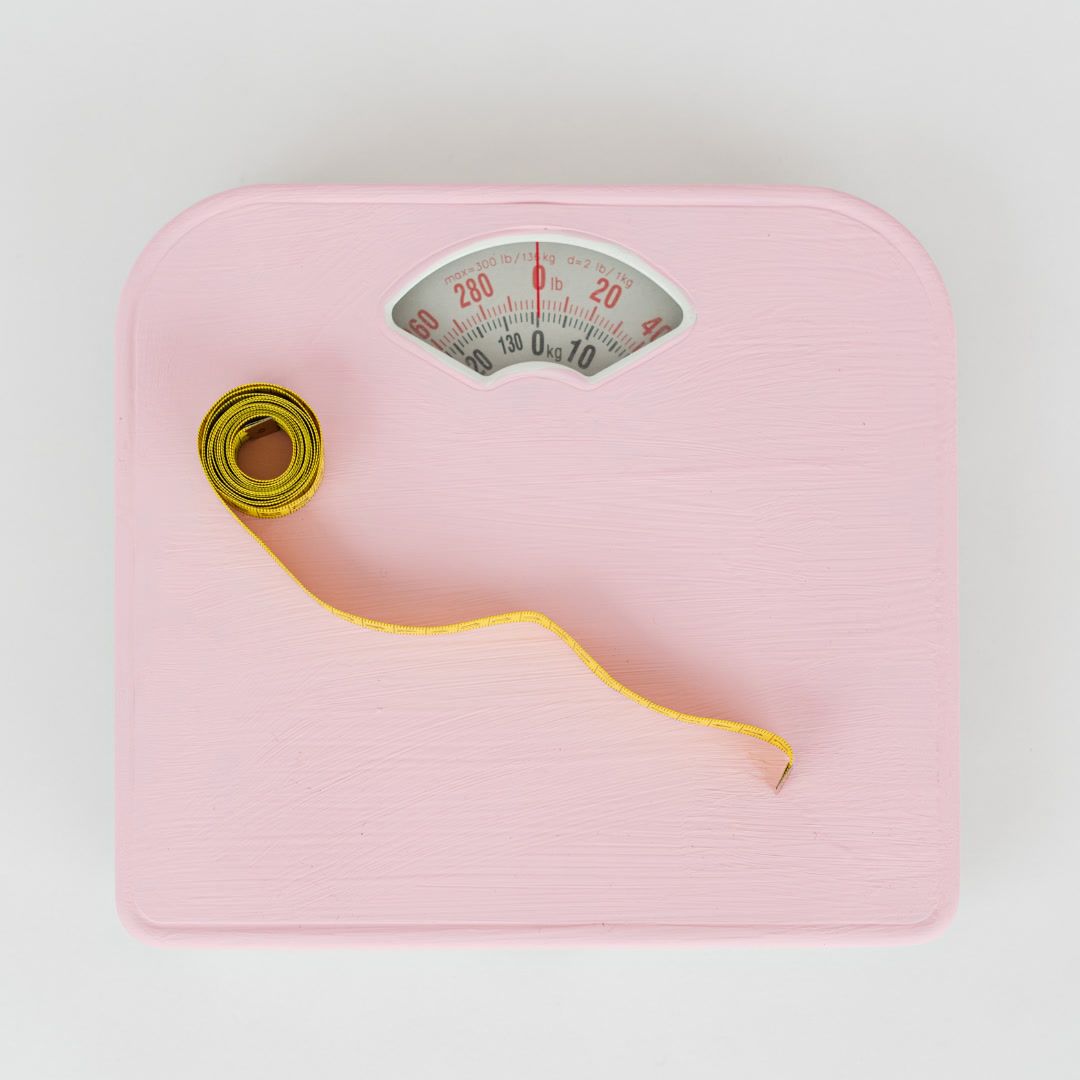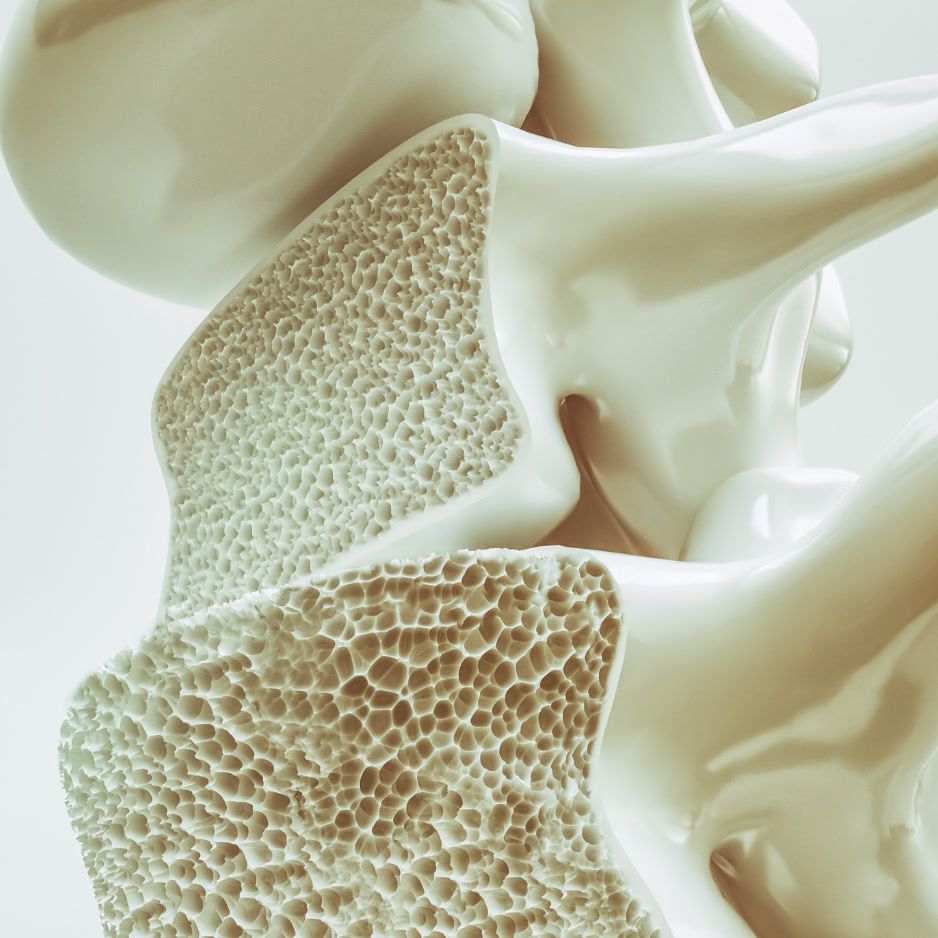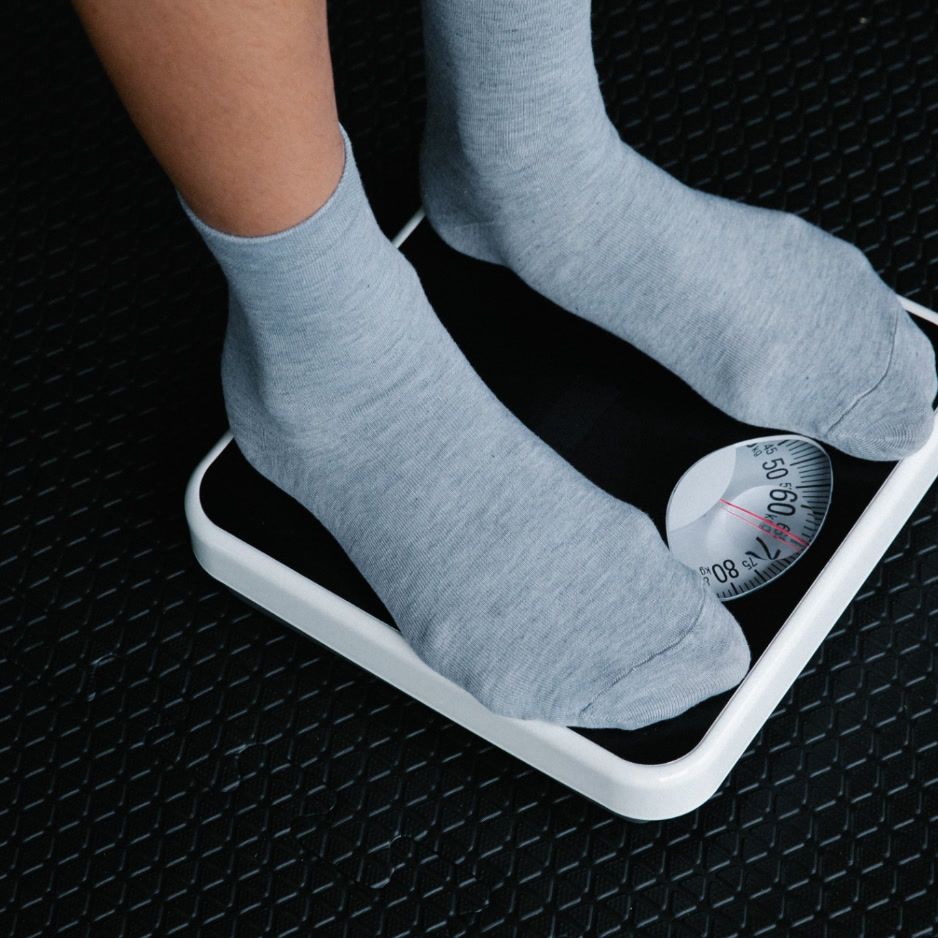Arm Workouts for Women: 15-Minute Circuit & 12-Week Plan
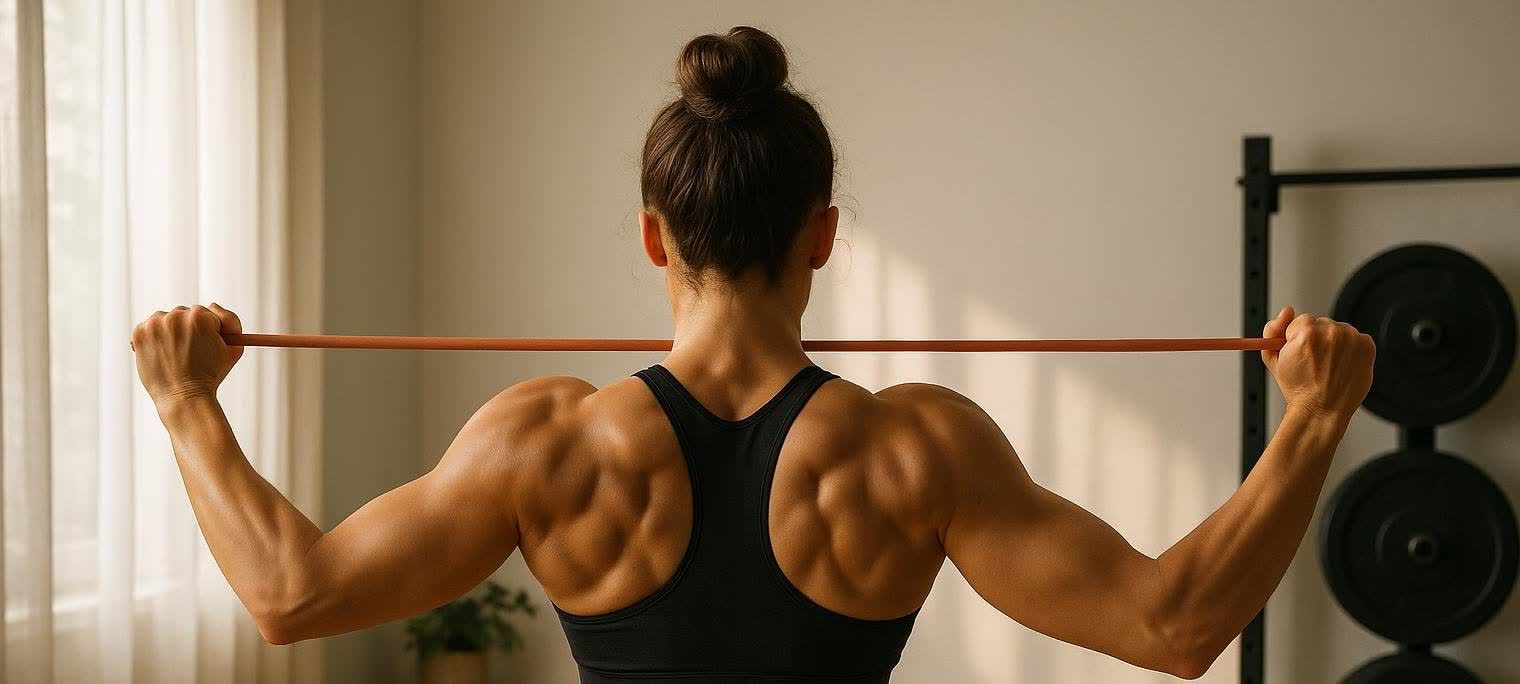
Arm Workouts for Women: 15-Min Circuit & 12-Week Plan
Quick answer (TL;DR): The best arm workouts for women combine compound moves like push-ups, tricep dips, bicep curls, overhead presses, and resistance-band rows in a 15-minute circuit performed 2–3 times per week.
Why Strong Arms Matter for Women
- Functional strength: Carrying groceries, picking up kids, and hoisting luggage all rely on arm and shoulder muscles.
- Bone-density benefits: Regular resistance training helps slow age-related bone loss and lowers osteoporosis risk. The American College of Sports Medicine guidelines recommend at least two strength sessions per week.
- Metabolic edge: Adding lean muscle slightly raises resting calorie burn, which helps manage body fat.
- Confidence in sleeveless outfits: Defined shoulders and triceps create a toned look without "bulking up."
Busting the "Bulky" Myth
Women have about 10 to 20 times less testosterone than men, making body-builder-level hypertrophy extremely unlikely (see this Healthline article on women’s testosterone levels). Heavy or light weights won’t turn you into the Hulk—but skipping strength work can leave arms weak and prone to injury.
Equipment Options (Pick What You Have)
| Level | Bodyweight | Dumbbells | Resistance Bands |
|---|---|---|---|
| Beginner | Incline push-up | 2–5 lb biceps curl | Light band row |
| Intermediate | Standard push-up | 8–15 lb hammer curl | Medium band face-pull |
| Advanced | Decline push-up | 20 lb+ overhead press | Heavy band–assisted pull-up |
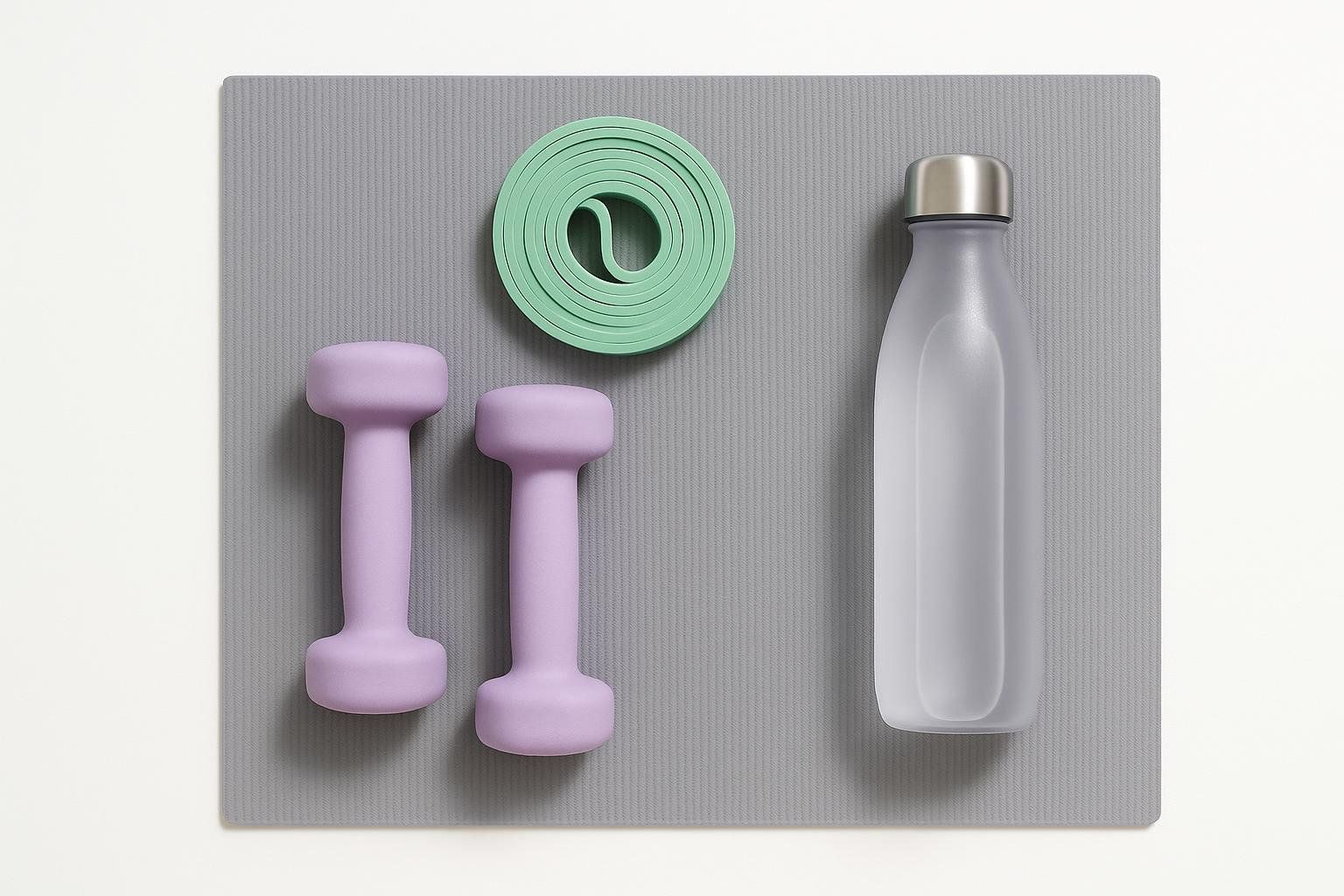
No gear? Slow each rep to a 3-second lowering phase to keep muscles under tension.
Top 8 Arm Exercises for Women
For each move, focus on proper form and avoid these common mistakes.
- Push-Up
• Set up in a high plank with wrists under shoulders and core braced.
• Inhale as you lower until your chest hovers an inch above the floor, elbows at roughly 45°.
• Exhale and drive the floor away, keeping hips and shoulders rising together. Avoid flared elbows or sagging hips.
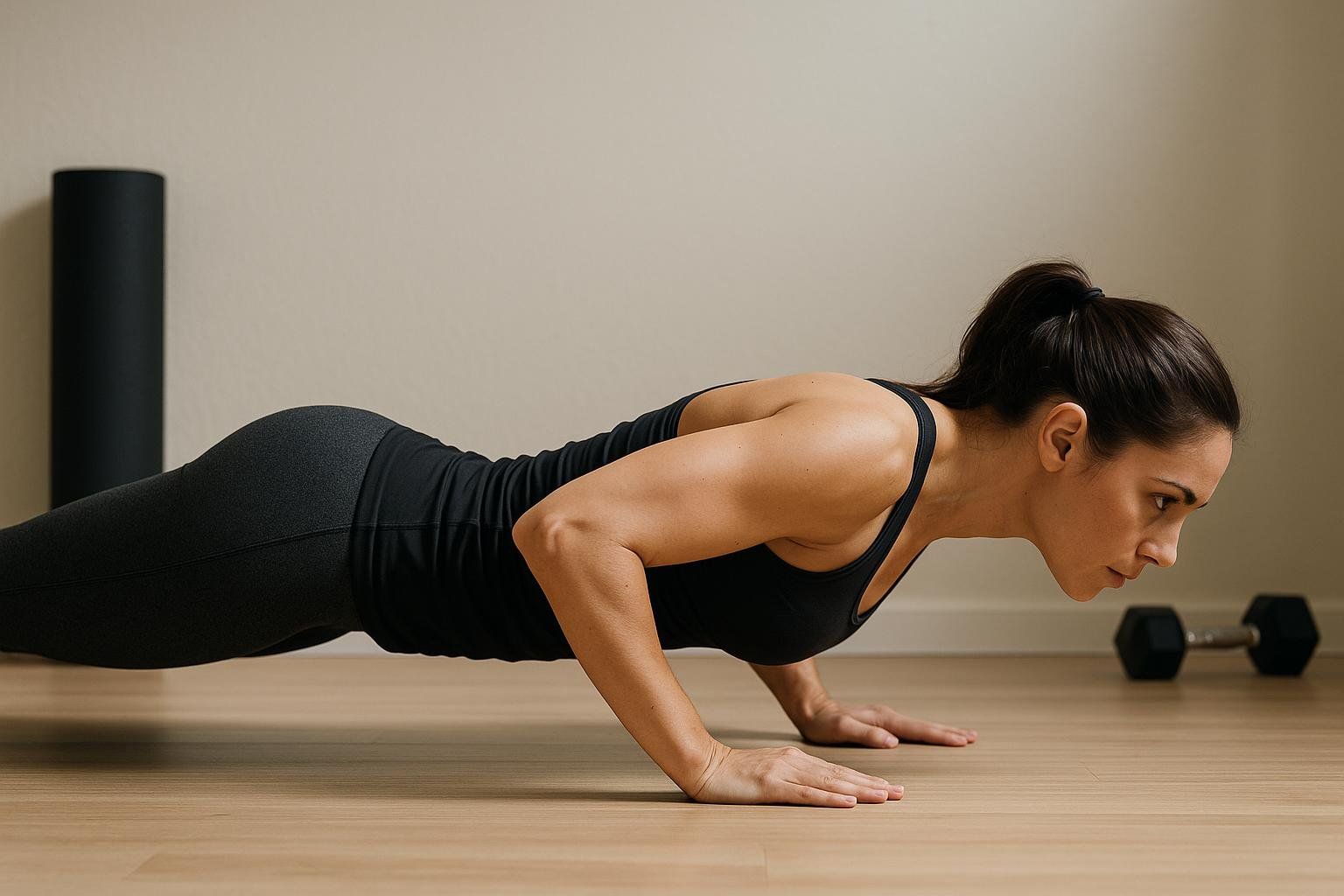
-
Tricep Dip (Chair)
• Place palms on a sturdy chair, fingers forward, and slide hips off the seat.
• Inhale while bending elbows straight back until upper arms are parallel to the floor.
• Exhale and press through your palms to return, keeping shoulders down. Don’t shrug toward ears. -
Bicep Curl (Dumbbell or Band)
• Stand tall, elbows pinned to ribcage, palms facing forward.
• Exhale as you curl toward shoulders without swinging.
• Inhale on the descent, controlling the weight for 2–3 seconds. Keep wrists straight. -
Overhead Shoulder Press
• Start with weights at collarbone height, knuckles up and ribs stacked.
• Exhale to press overhead until biceps frame the ears; avoid hyperextending the low back.
• Inhale as you lower with control. Squeeze glutes for stability.
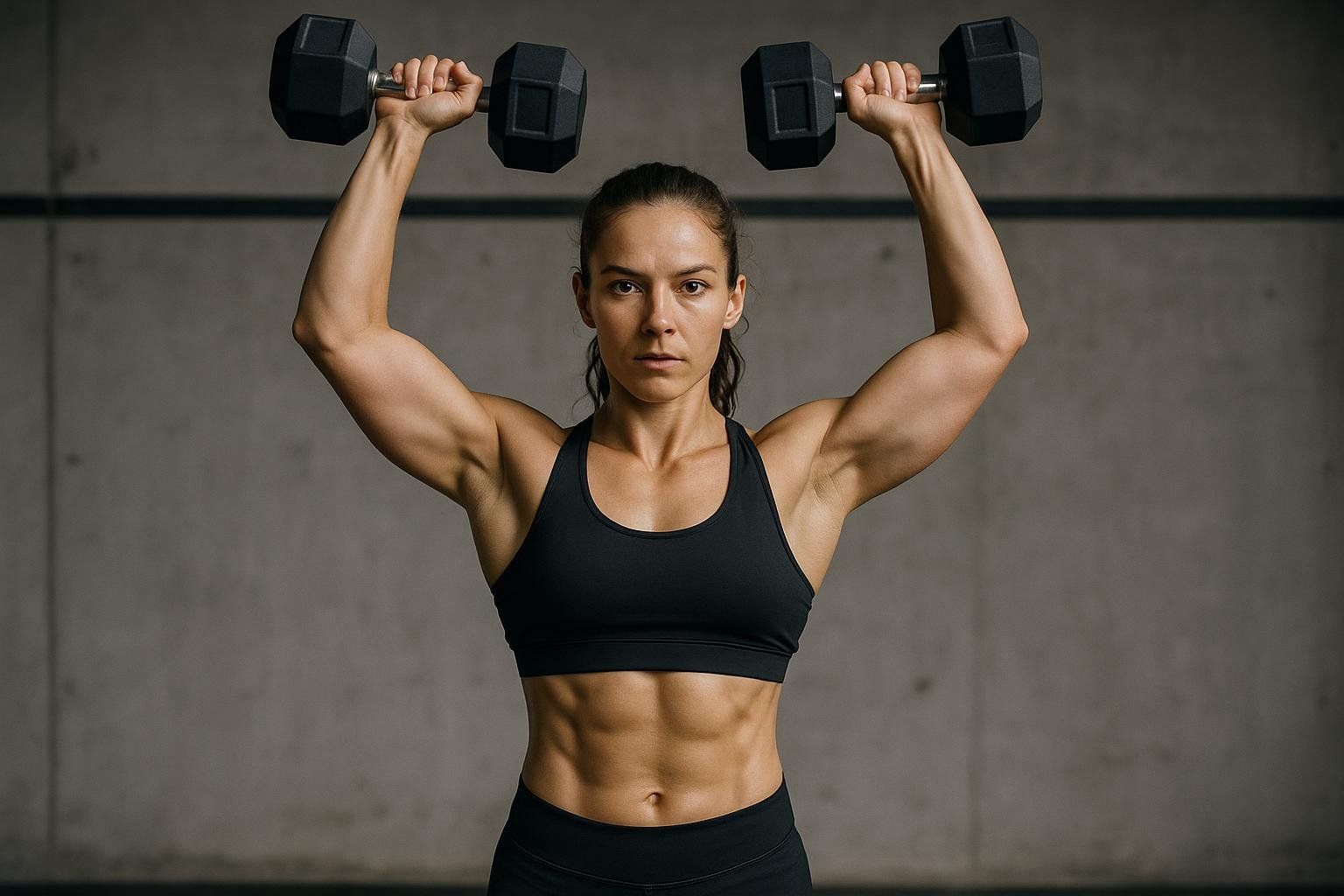
-
Resistance-Band Row
• Anchor band low, hinge hips 30°, and grab handles with palms neutral.
• Exhale while pulling toward the ribcage, squeezing shoulder blades.
• Inhale to extend arms fully. Keep neck long; don’t round upper back. -
Hammer Curl
• Hold weights thumbs-up, elbows glued to sides.
• Exhale to curl until forearms are vertical, feeling forearms and brachialis work.
• Lower slowly on the inhale. Avoid using momentum. -
Lateral Raise
• With a slight bend in elbows, raise arms to shoulder height, leading with elbows and exhaling on the lift.
• Pause briefly before lowering for 3 seconds on the inhale.
• Common mistake: shrugging or swinging—use a lighter weight if needed.
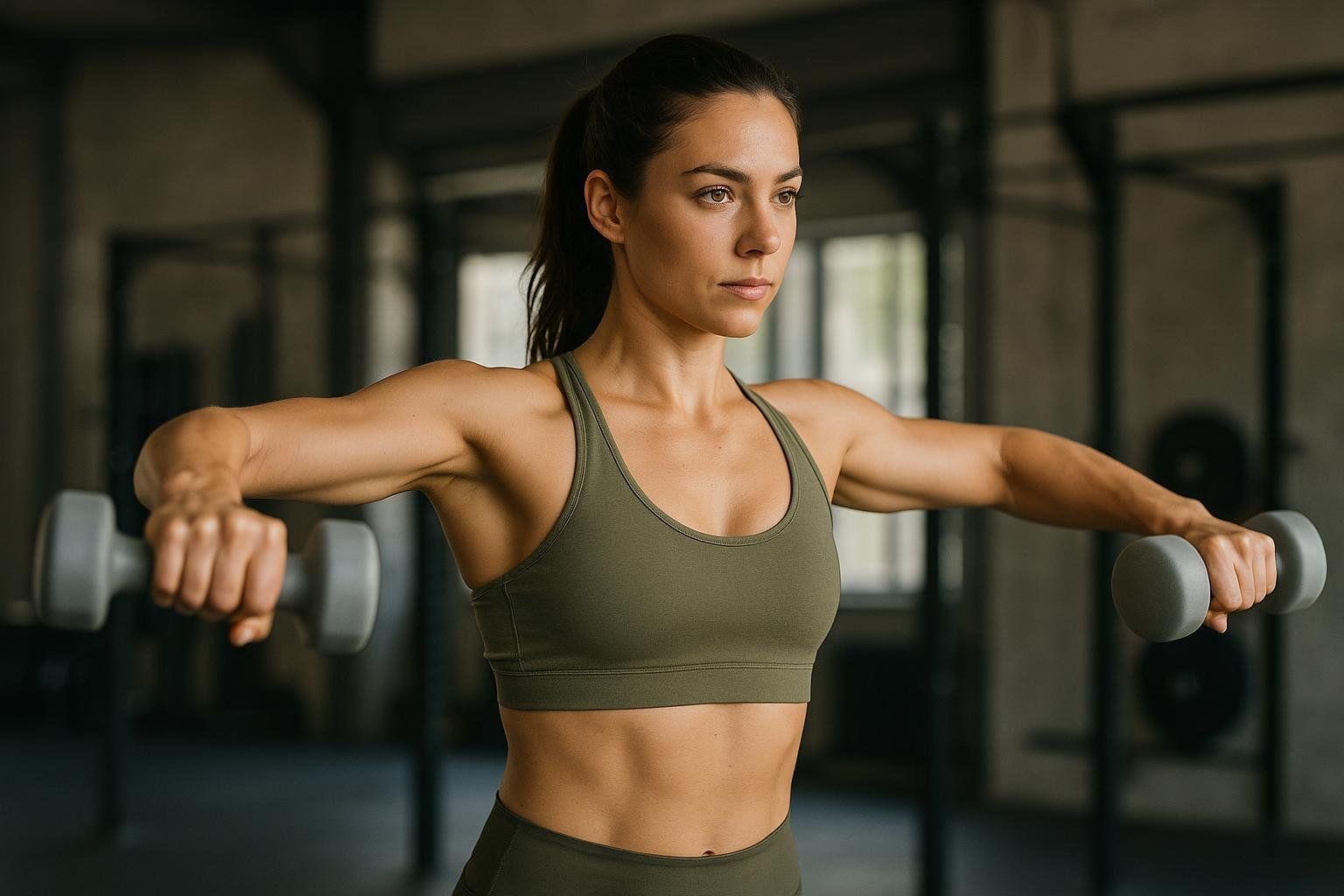
- Plank – Shoulder Tap
• From a plank, set feet hip- to shoulder-width for stability.
• Exhale as you tap the opposite shoulder, keeping hips steady.
• Inhale while placing the hand back down. Don’t let the lower back sag.
Coach's cue: Keep elbows slightly in front of your torso during curls—this maximizes biceps activation and protects shoulders.
15-Minute At-Home Arm Circuit
Perform 3 rounds, resting 30 seconds between moves and 1 minute between rounds.
| Exercise | Reps/Time |
|---|---|
| Push-Ups | 10–15 |
| Tricep Chair Dips | 12 |
| Bicep Curls | 12 each arm |
| Overhead Press | 12 |
| Band or Towel Rows | 15 |
| Plank Shoulder Taps | 30 seconds |
Frequency: 2–3 × per week on non-consecutive days. Add weight or reps once all sets feel easier than a 7/10 effort by using the RPE scale to measure effort.
Progressive 12-Week Arm Strength Program
| Phase | Weeks | Focus | Sets × Reps | Progression |
|---|---|---|---|---|
| Foundation | 1–4 | Master form | 2 × 12 | Add 5 lb or +2 reps when form is solid |
| Growth | 5–8 | Muscle Growth | 3 × 10 | • Maintain a 3-1-1 tempo (3-sec lower, 1-sec pause, 1-sec lift). • Increase weight by 2–5 lb once all reps are clean |
| Power & Definition | 9–12 | Strength + metabolic finishers | 4 × 8 heavy lifts (Overhead Shoulder Press and Dumbbell/Band Rows) followed by one round of the 15-minute circuit finisher | • Add 2–5 lb to heavy lifts each week. • Shorten rest in the finisher by 10 seconds weekly |
Nutrition & Recovery for Toned Arms
- Protein: Aim for approximately 1.2–2.0 g/kg body weight per day to support muscle repair—ranges endorsed by the International Society of Sports Nutrition.
- Carbs: A small, easily digestible snack—such as a banana (~25 g of carbs)—30–60 minutes before training can top up glycogen and power your sets.
- Hydration: A fluid loss of about 2 % of body weight can impair muscular strength and power (Human Kinetics excerpt).
- Rest: Muscles need roughly 48 hours to rebuild. Sleep 7–9 hours.
Want more detail? Check out our guide to female muscle building for advanced strategies.
Track Your Progress With a BodySpec DEXA Scan
Mirror selfies are subjective. A DEXA scan objectively measures lean-mass gain and fat-mass loss—down to each arm. Book a scan and get a personalized report that confirms the scan’s extremely low radiation dose.
FAQs
How many arm workouts should women do per week?
Most women thrive on 2–3 focused sessions plus compound lifts like rows and presses in full-body days.
Will lifting heavy make my arms look bigger?
It’s very unlikely. Gaining significant bulk requires a high-calorie diet paired with specialized heavy lifting—different from this program’s focus on toning and strength.
I have shoulder pain—what can I swap for dips?
Try banded tricep extensions or close-grip push-ups on an elevated surface.
What's a beginner weight for bicep curls?
Start with 5 lb and perform slow, controlled reps. If you breeze through 12 reps with no fatigue, level up.
Can I still get results with just bodyweight?
Yes—progress by slowing tempo, increasing range, or elevating feet in push-ups.
Measure Your Progress, Prove Your Strength
Put this plan to work, then let a BodySpec DEXA scan show the muscle you’ve earned. When the data confirms your effort, motivation soars for the next workout.
